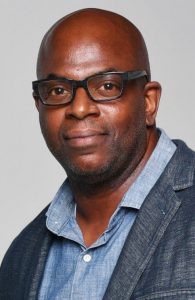How will the conflicts of our time be reflected in history books 10 years from now? What about 30?

What signs, symbols, texts or objects will tell our stories? Who gets to decide that?
Well, Aaron Bryant, for one.
“We’re very much committed to, at our museum, committed to being a conduit for voices and we just provide a platform for people to share their stories,” said Bryant in a June 2020 interview with Scripps National Correspondent Stephanie Stone.
The museum to which Bryant is referring is the National Museum of African American History and Culture, part of the Smithsonian Institution, where Bryant works as a curator of photography and visual culture.
“Our museum isn’t just about the past, it’s about the present moment and looking towards the future,” he told Stone. “How does history help to inform where we are and where we hope to be for generations to come?”
At 10:45 a.m. EDT Friday, July 17, on the CHQ Assembly Video Platform, Bryant will seek to answer that question through his lecture titled, “Preserving History In Real Time.” Virtual attendees of the lecture can submit questions at any time for a live Q-and-A after the program. Questions can be sent via the submission portal at www.questions.chq.org from any mobile or desktop browser, or on Twitter, using #CHQ2020.
Part of the challenge for museum curators like Bryant in the year 2020 is how to take advantage of the vast cornucopia of digital photos being taken by protestors and demonstrators.
“How do we collect cell phone photographs as well as videos of people who are participating in demonstrations or are a part of some transformative event, how do we do that digitally?” Bryant said in his Scripps interview. “Think about a document maybe 10 to 20 years ago. Would you be able to access that document today, floppy disks for example, so if we collect digitally what’s the best way to archive what would be an artifact and how would people access it in the future?”
In a June 2020 interview with NPR, Bryant said he believes that, whether it’s recorded digitally or not, “we live history every day of our lives.”
That’s true for demonstrators taking part in the Black Lives Matter protests across the country, including in front of the White House.
Bryant said he traveled to Washington, D.C. from Baltimore in order to help document the fence surrounding the White House, which had been converted by protestors into a makeshift exhibit of protest art.
“So we thought it was most important for us to come down here to make sure that 50, 100, 200 years from now, this moment is not forgotten, these voices aren’t forgotten and these stories can be shared for generations,” he told NPR. “And the message that’s on the signs — we can’t forget the message because they represent the voices of the people who helped to shape this history.”
This program is made possible by the Barbara and Herb Keyser Fund.




